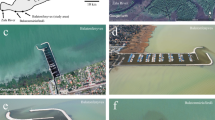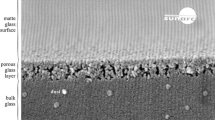Abstract
When an artificial surface (e.g. an asphalt road) reflects strongly and horizontally polarized light as water bodies do in the nature, polarotactic aquatic insects, like the creek-dwelling Ephemera danica mayflies easily become deceived. After swarming above the creek surface, E. danica females begin their upstream compensatory flight and can be deflected at bridges with an asphalt road and continue their flight above the road surface. Thus, the water-mimicking optical signal of the road may deceive water-seeking polarotactic mayflies and lead them to distant, polarized-light-polluting surfaces, which elicit anomalous oviposition. On an asphalt road crossing a creek, we deployed polarizing insect traps at different distances from the bridge. The traps captured E. danica mayflies and their catch numbers indicated that these mayflies originated from the direction of the bridge, proving that they followed the track of the road. Our results suggest that distant polarized-light-polluting objects along an asphalt road can trap mayflies emerging from a creek crossing the road. The combination of an asphalt road and a man-made in situ (local) polarizing surface forms a complex ecological trap, being capable of luring aquatic insects from greater distances. To eliminate the oviposition of dangered polarotactic aquatic insects emerging from a creek onto the asphalt road crossing the creek, we suggest to deploy strongly and horizontally polarizing water-filled black trays along the edge of the road during the swarming period. Thus, the eggs of the deceived insects can be moved back to the creek in order to assist the conservation of the offspring-generation.




Similar content being viewed by others
References
Bernáth B, Szedenics G, Wildermuth H, Horváth G (2002) How can dragonflies discern bright and dark waters from a distance? The degree of polarization of reflected light as a possible cue for dragonfly habitat selection. Freshw Biol 47:1707–1719
Bernáth B, Kriska G, Suhai B, Horváth G (2008) Insectivorous birds as insect indicators on plastic sheets attracting polarotactic aquatic insects. Acta Zool Hung 54:145–155
Brodskiy AK (1973) The swarming behavior of mayflies (Ephemeroptera). Entomol Rev 52:33–39
Csabai Z, Boda P, Bernáth B, Kriska G, Horváth G (2006) A “polarization sun-dial” dictates the optimal time of day for dispersal by flying aquatic insects. Freshw Biol 51:1341–1350
Elliott JM, Humpesch UH (1980) Eggs of Ephemeroptera. Annu Rep Freshwat Biological Assoc 45:62–69
Hale R, Swearer SE (2016) Ecological traps: current evidence and future directions. Proc R Soc B 283:20152647. doi:10.1098/rspb.2015.2647
Horváth G, Varjú D (2004) Polarized light in animal vision - polarization patterns in nature. Springer, Heidelberg, Berlin, New York
Horváth G, Zeil J (1996) Kuwait oil lakes as insect traps. Nature 379:303–304
Horváth G, Kriska G, Malik P, Robertson B (2009) Polarized light pollution: a new kind of ecological photopollution. Front Ecol Environ 7:317–325
Horváth G, Blahó M, Egri Á, Kriska G, Seres I, Robertson B (2010) Reducing the maladaptive attractiveness of solar panels to polarotactic insects. Conserv Biol 24:1644–1653
Horváth G, Kriska G, Robertson, B (2014) Anthropogenic polarization and polarized light pollution inducing polarized ecological traps. In: Horváth G (ed) Polarized light and polarization vision in animal sciences. Springer, Heidelberg, pp 443–513
Kazanci N (2013) The swarm of Ephoron virgo (Olivier, 1791) (Ephemeroptera: Polymitarcyidae) as nuptial behaviour in Sakarya River (Turkey). Rev Hydrobiol 6:69–80
Kokko H, Sutherland WJ (2001) Ecological traps in changing environments: ecological and evolutionary consequences of a behaviourally mediated Allee effect. Evol Ecol Res 3:537–551
Kriska G, Horváth G, Andrikovics S (1998) Why do mayflies lay their eggs en masse on dry asphalt roads? Water-imitating polarized light reflected from asphalt attracts Ephemeroptera. J Exp Biol 201:2273–2286
Kriska G, Csabai Z, Boda P, Malik P, Horváth G (2006) Why do red and dark-coloured cars lure aquatic insects? The attraction of water insects to car paintwork explained by reflection-polarisation signals. P Roy Soc Lond B Bio 273:1667–1671
Kriska G, Bernáth B, Farkas R, Horváth G (2009) Degrees of polarization of reflected light eliciting polarotaxis in dragonflies (Odonata), mayflies (Ephemeroptera) and tabanid flies (Tabanidae). J Insect Physiol 55:1167–1173
Malik P, Hegedüs R, Kriska G, Horváth G (2008) Imaging polarimetry of glass buildings: why do vertical glass surfaces attract polarotactic insects? Appl Opt 47:4361–4374
Málnás K, Polyák L, Prill É, Hegedüs R, Kriska G, Dévai G, Horváth G, Lengyel S (2011) Bridges as optical barriers and population disruptors for the mayfly Palingenia longicauda: an overlooked threat to freshwater biodiversity? J Insect Conserv 15:823–832
R Core Team (2013) R: a language and environment for statistical computing. R Foundation for Statistical Computing, Vienna http://www.R-project.org/
Robertson BA, Hutto RL (2006) A framework for understanding ecological traps and an evaluation of existing evidence. Ecology 87:1075–1085
Schlaepfer MA, Runge MC, Sherman PW (2002) Ecological and evolutionary traps. Trends Ecol Evol 17:474–480
Schwind R (1983) A polarization-sensitive response of the flying water bug Notonecta glauca to UV light. J Comp Physiol 150:87–91
Schwind R (1989) A variety of insects are attracted to water by reflected polarized light. Naturwissenschaften 76:377–378
Schwind R (1991) Polarization vision in water insects and insects living on a moist substrate. J Comp Physiol A 169:531–540
Schwind R, Horváth G (1993) Reflection-polarization pattern at water surfaces and correction of a common representation of the polarization pattern of the sky. Naturwissenschaften 80:82–83
Száz D, Horváth G, Barta A, Robertson B, Farkas A, Egri Á, Tarjányi N, Rácz G, Kriska G (2015) Lamp-lit bridges as dual light-traps for the night-swarming mayfly, Ephoron virgo: Interaction of polarized and unpolarized light pollution. PLoS One. doi:10.1371/journal.pone.0121194
Wildermuth H, Horváth G (2005) Visual deception of a male Libellula depressa by the shiny surface of a parked car (Odonata: Libellulidae). Int J Odonatol 8:97–105
Wright JF, Hiley PD, Berrie AD (1981) A 9-year study of the life cycle of Ephemera danica Müll.(Ephemeridae: Ephemeroptera) in the river Lambourn, England. Ecol Entomol 6:321–331
Acknowledgements
This work was supported by the grant NKFIH PD-115451 received by Ádám Egri from the Hungarian National Research, Development and Innovation Office. We are grateful to the staff of T.ZS.M. Produkció and Filmdzsungel Stúdió for providing the video sequence about E. danica egg-laying and we thank Dr. András Barta for his help in the field experiments. This work was also supported by Research Centre of Excellence (1476-4/2016/FEKUT). We also thank two anonymous Reviewers for their constructive comments.
Author information
Authors and Affiliations
Corresponding author
Ethics declarations
Conflict of Interest
The authors declare that they have no conflict of interest.
Electronic supplementary material
Rights and permissions
About this article
Cite this article
Egri, Á., Pereszlényi, Á., Farkas, A. et al. How can Asphalt Roads Extend the Range of In Situ Polarized Light Pollution? A Complex Ecological Trap of Ephemera danica and a Possible Remedy. J Insect Behav 30, 374–384 (2017). https://doi.org/10.1007/s10905-017-9623-3
Revised:
Accepted:
Published:
Issue Date:
DOI: https://doi.org/10.1007/s10905-017-9623-3




